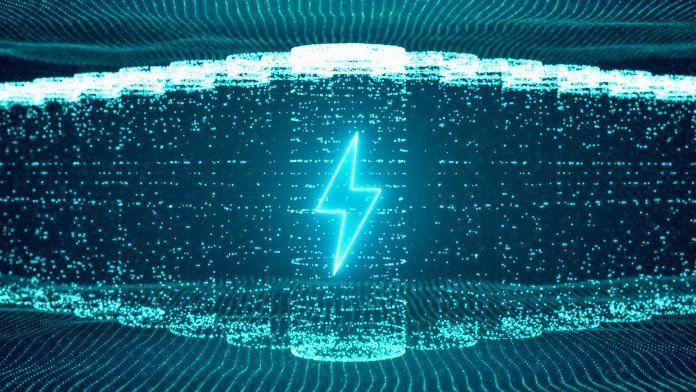A stable anode material for lithium-ion batteries, comprised of bio-based polymers, could harness super-fast battery charging for electric vehicles.
With pressure to move towards net-zero transport, an increasing number of researchers are focusing their efforts on electric vehicles (EVs) and ways to make them a more efficient alternative to conventional has vehicles.
Enhancing lithium-ion batteries
One key area of improvement is the lithium-ion batteries used in EVs, with areas such as safety, durability and faster charging being important developments. Currently, it takes the most advanced EVs around 40 minutes to charge, while gas cars can be refuelled in under five minutes. In order to be a viable option to consumers, it is essential that charging time is reduced to under 15 minutes.
One way to decrease the charging time of lithium-ion batteries is to increase the diffusion rate of lithium ions, which can be achieved by increasing the interlayer distance in the carbon-based materials used in the battery’s anode.
While this has been accomplished with limited success by introducing nitrogen impurities, there is currently no technique easily available to control the interlayer distance, or to concentrate the doping element.
Optimising anode materials for batteries
Now, a team of researchers from Japan Advanced Institute of Science and Technology (JAIST) have developed an approach for anode fabrication that may result in incredibly fast charging of lithium-ion batteries.
The team, led by Professor Noriyoshi Matsumi, comprises Professor Tatsuo Kaneko, Senior Lecturer Rajashekar Badam, JAIST Technical Specialist Koichi Higashimine, JAIST Research Fellow Yueying Peng, and JAIST student Kottisa Sumala Patnaik.
Their research findings were published online in Chemical Communications.
Their method constitutes a relatively simple, sustainable, and very efficient way to manufacture a carbon-based anode with very high nitrogen content. The precursor material for the anode is poly (benzimidazole), a bio-based polymer that can be synthesised from raw materials of biological origin.
By calcinating this thermally stable material at 800°C, the researchers were able to arrange a carbon anode with a record-setting nitrogen content of 17% in weight. They confirmed the effective synthesis of this material and examined its composition and structural properties by employing a variety of methods, such as scanning electron tunnelling microscopy, Raman spectroscopy, and X-ray photoelectron spectroscopy.
In order to test the performance of their anode and contrast it with the more common graphite, the team constructed half-cells and full-cells, and conducted charge–discharge experiments. The results of this were encouraging, as the proposed anode material proved to be appropriate for fast charging, as a result of its enhanced lithium-ion kinetics.
Additionally, durability tests indicated that the batteries with the proposed anode material retained approximately 90% of its initial capacity even after 3,000 charge-discharge cycles at high rates, which is significantly more than the capacity retained by graphite-based cells.
Towards faster charging batteries
Professor Matsumi said: “The extremely fast charging rate with the anode material we prepared could make it suitable for use in EVs. Much shorter charging times will hopefully attract consumers to choose EVs rather than gasoline-based vehicles, ultimately leading to cleaner environments in every major city across the world.”
Another noteworthy advantage of the proposed anode material is the use of a bio-based polymer in its synthesis. As a low-carbon technology, the material naturally leads to a synergistic effect that reduces CO2 emissions further.
Professor Matsumi added: “The use of our approach will advance the study of structure–property relationships in anode materials with rapid charge–discharge capabilities.”
Modifications to the structure of the polymer precursor may result in further optimised performance, which may be applicable for the batteries not only of EVs, but also of portable electronics.
Finally, the development of highly durable batteries will decrease the global consumption of rare metals, which are non-renewable resources.







